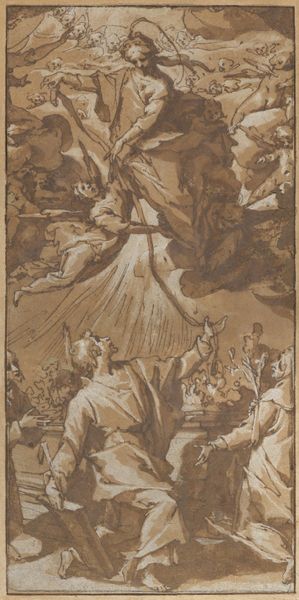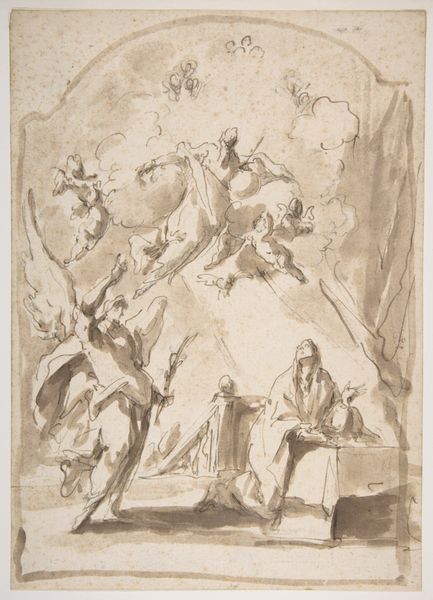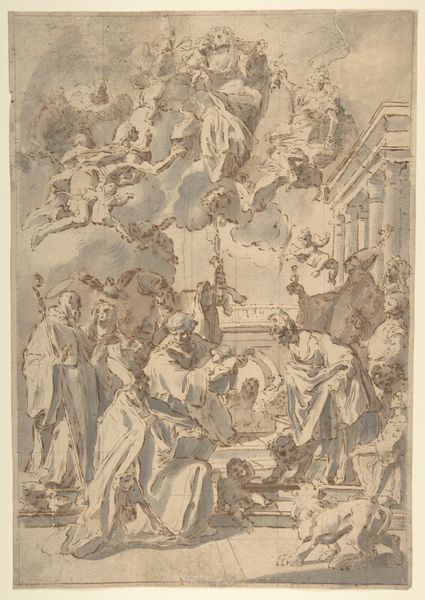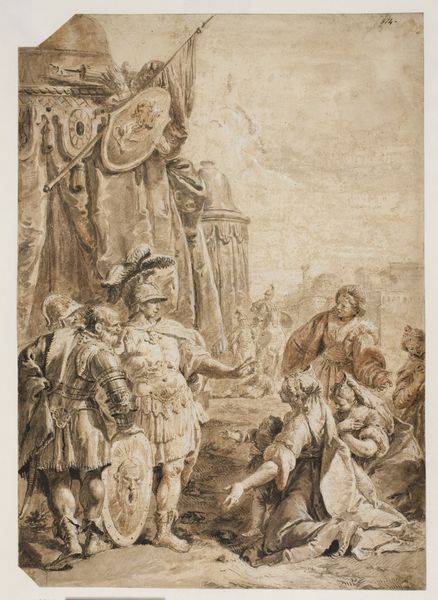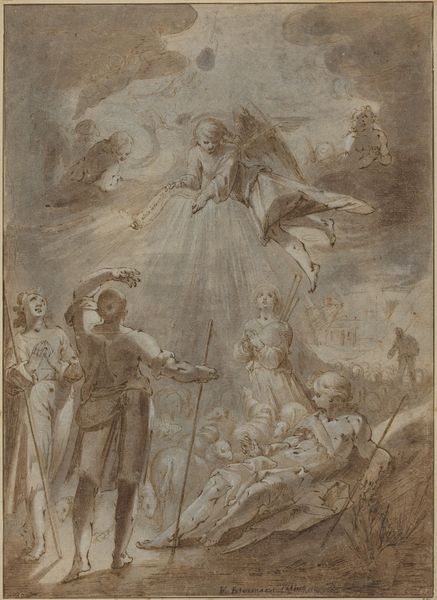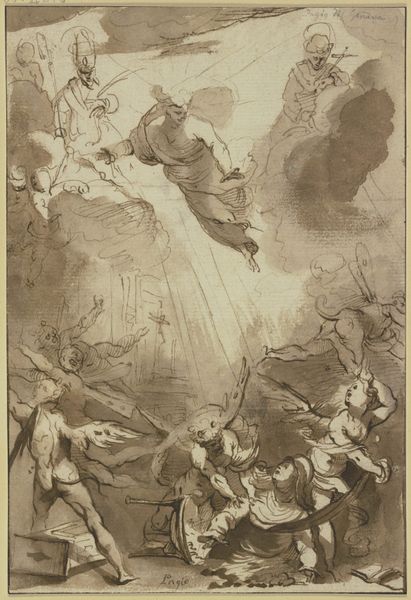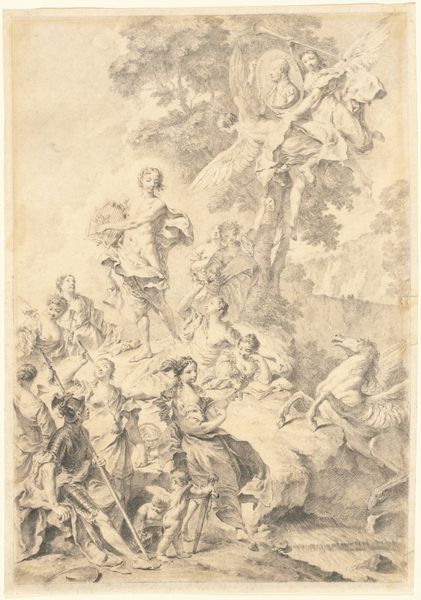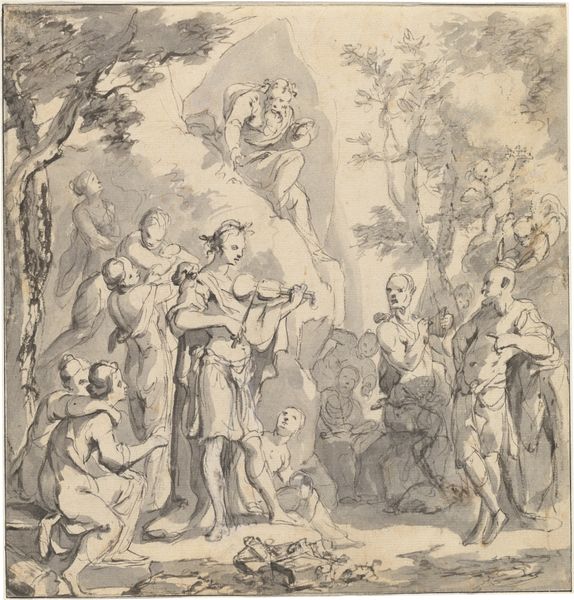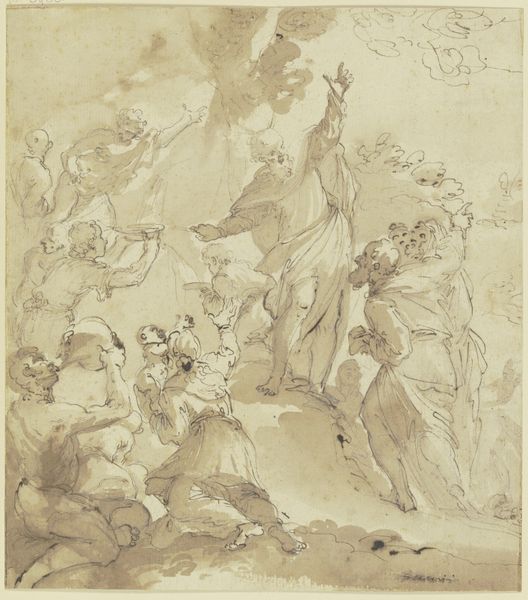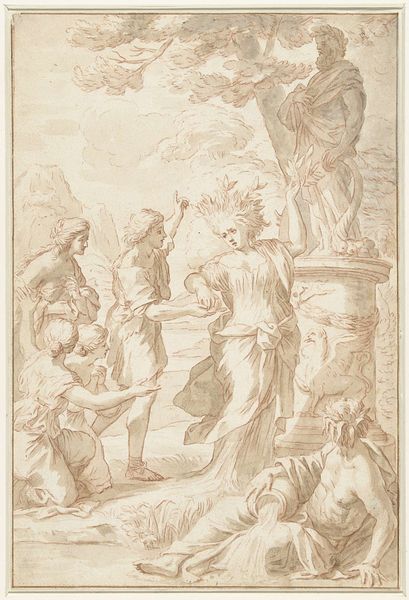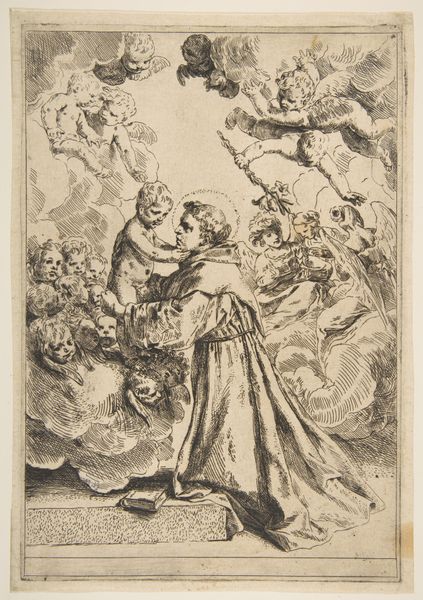
Madonna and Child in Glory, with Three Male Saints Below n.d.
0:00
0:00
drawing, print, paper, ink, inorganic-material, chalk, black-chalk
#
drawing
#
toned paper
#
ink painting
# print
#
pencil sketch
#
charcoal drawing
#
possibly oil pastel
#
paper
#
ink
#
fluid art
#
inorganic-material
#
coffee painting
#
underpainting
#
chalk
#
water
#
watercolour illustration
#
italy
#
black-chalk
#
watercolor
Dimensions: 237 × 184 mm
Copyright: Public Domain
Curator: We're looking at Francesco Vanni's "Madonna and Child in Glory, with Three Male Saints Below," currently held at The Art Institute of Chicago. It’s undated, but made with pen and brown ink, with black and red chalk on toned paper. Editor: You know, it feels almost like a fleeting dream, doesn’t it? The sepia tones and soft chalk lines create such an ethereal, transient atmosphere. Like a half-remembered vision. Curator: That's an interesting observation. I think what you’re picking up on is the artistic dialogue of the era. Vanni worked during a period when the Church was actively seeking art that would reaffirm its power. So, even this preliminary sketch engages with that dynamic, positioning the divine in conversation with earthly saints. The Madonna's positioning, elevated amongst clouds of angels, reinforces the celestial hierarchy and the church's doctrines of sainthood. Editor: Right, the strategic PR. But look at the three saints—their expressions seem so earnest, so genuinely moved. It feels more intimate than propaganda. The saint in the middle, with arms outstretched, the folds of his cloak drawn with such simple lines, captures that raw emotion of faith—almost like a cry for connection, the need for salvation. I imagine what must it have been like to truly believe with such fervor! Curator: Indeed. Art historians would highlight the careful balance between the earthly and the divine realms. Notice how the positioning of the saints, almost forming a semi-circle, draws the eye upward, guiding the viewer to the Virgin and Child. That compositional strategy effectively elevates the status of the Madonna, cementing the hierarchical framework so crucial to the Church's ideology. Furthermore, the maleness of the figures requires us to question the nature of power that art has historically constructed to justify it. Editor: And yet, I get caught up in the expressiveness, the sheer humanity of it. The angels peeking through the clouds like mischievous kids, or Mary protectively holding her child, with gentle features. It’s those tender gestures that makes this divine display so… well, human. It whispers possibilities for something else beyond social constraints. Curator: I appreciate you drawing attention to that aspect. Ultimately, it’s these nuanced observations that open up richer dialogues. How the artist both affirmed and complicated the socio-political dynamics of their time. Editor: Well said. It’s pieces like this that make me question what it means to even try making something new in a world full of echoes from the past. Inspiring and humbling all at once.
Comments
No comments
Be the first to comment and join the conversation on the ultimate creative platform.
